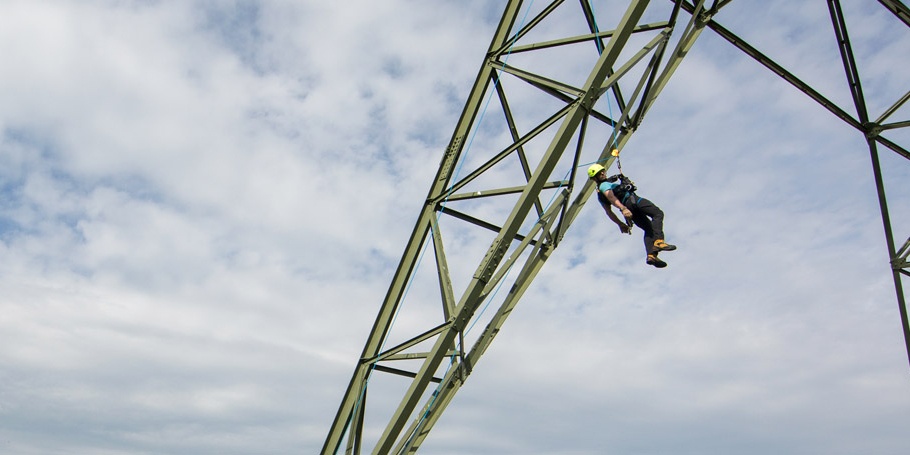
Height Dynamics supply a large range of Tower Rescue Kits. So…what does a Tower Rescue Kit contain? Well, the short answer is – anything you want it too. Some of the kits we supply are minimal and only contain the basics. Others contain first aid kits or extra pulleys to create mechanical advantage systems. Remember though, you may have to carry the rescue kit up the tower to perform a rescue. Extra gear is going to feel very heavy once you get climbing.
Most Tower Rescue Kits contain similar components. A rope, an anchor strap, descender, a mini haul kit and a few carabiners are usually found in every kit. Let’s have a look at those items in detail.
Tower Rescue Rope
Rescue ropes are almost always 11mm kernmantle rope. We recommend using static rope manufactured to meet AS/NZS 4142.3 Static Rope for Life Rescue. Knots are rarely used with most preferring a sewn eye at the anchor end. Height Dynamics recommends that the rope is up to 5 meters longer than the height of the tower. It is easy to use up extra rope with redirects.
Anchor Strap
It’s likely that two persons will be relying on an effective anchor. The stronger the better. Consider using a two-ply anchor strap or at least use a fitted sling protector. This will provide extra security over sharp edges. View a range of tie off adaptors and anchor straps here.
Rescue Descender
There is a range of rescue descenders available. The friction can vary from device to device. The descender will operate very differently with the weight of two people on it. Chose a descender that you are familiar with and practise your rescue. Minimum rating should be 200 – 250 kgs. For more information on the best descender for rescue click through to our blog post Rescue Descenders.
Mini Haul or Haultrack System
A compact mechanical advantage kit is an indispensable part of the rescue kit. Use this device to pick off and evacuate a victim. Some pre-rigged kits are available such as the ISC Haulerbiner or the Petzl Jag. Combine them with a rope grab or ascender to attach the haul kit to the rescue rope.
Carabiners
Steel carabiners can add unwanted weight. Lightweight, high strength alloy carabiners are an obvious choice for a tower rescue kit. Given that steel carabiners are stronger though you may consider carrying one or two to use on your main anchor. Carry a minimum of six in your kit.
Extras
You can find the items listed above are in every Tower Rescue Kit. Extra items may be desirable to give the kit the flexibility on more advanced sites.
- In some cases, the rescue rope can’t be rigged above the casualty. Extra slings may be useful to redirect or change of direction of the rope.
- A rescue knife can assist in releasing the casualty in a pick-off rescue.
- Some harnesses have no front rescue attachment point, a “yoke” can create an attachment point on a harness using the side dees.
- Extra carabiners are always useful.
- A simple first aid kit with a cervical collar can stabilise an injured casualty.
Tower Rescue can a complicated process. Your rescue kit needs to contain equipment that will allow rescue on the site that you are working on. In the case of straight descents, a basic kit may be appropriate. When there are changes of direction or longer descents the skill level of the rescuer needs to be greater. In turn, the rescue kit will need to contain equipment appropriate to the advanced site.
Using incorrect equipment when working at heights can have serious consequences. The information given above is general in nature. It does not take the place of advice from experienced and trained persons. Height Dynamics team work at heights and use the equipment they sell. Contact Height Dynamics team or browse our online store for information about your tower rescue requirements.
